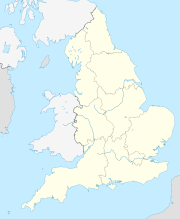Heslington Brain facts for kids
Quick facts for kids Heslington Brain |
|
|---|---|
| Material | Human brain |
| Size | (Mass "A") 70 millimetres (2.8 in) × 60 millimetres (2.4 in) × 30 millimetres (1.2 in) |
| Created | 673–482 BC |
| Discovered | By York Archaeological Trust in August 2008 |
| Place | Heslington, Yorkshire |
The Heslington Brain is a 2,600-year-old human brain found inside a skull buried in a pit in Heslington, Yorkshire, in England, by York Archaeological Trust in 2008. It is the oldest preserved brain ever found in Eurasia, and is believed to be the best-preserved ancient brain in the world. The skull was discovered during an archaeological dig commissioned by the University of York on the site of its new campus on the outskirts of the city of York. The area was found to have been the site of well-developed permanent habitation between 2,000–3,000 years before the present day.
A number of possibly ritualistic objects were found to have been deposited in several pits, including the skull, which had belonged to a man probably in his 30s. He had been hanged before being decapitated with a knife and his skull appears to have been buried immediately. The rest of the body was missing. Although it is not known why he was killed, it is possible that it may have been a human sacrifice or ritual murder.
The brain was found while the skull was being cleaned. It had survived despite the rest of the tissue on the skull having disappeared long ago. After being extracted at York Hospital, the brain was subjected to a range of medical and forensic examinations by York Archaeological Trust which found that it was remarkably intact, though it had shrunk to only about 20% of its original size. It showed few signs of decay, though most of its original material had been replaced by an as yet unidentified organic compound, due to chemical changes during burial.
According to the archaeologists and scientists who have examined it, the brain has a "resilient, tofu-like texture". It is not clear why the Heslington brain survived, although the presence of a wet, anoxic environment underground seems to have been an essential factor, and research is still ongoing to shed light on how the local soil conditions may have contributed to its preservation.
Discovery
The site where the brain was discovered is about 3 kilometres (1.9 mi) south-east of York city centre on the eastern edge of Heslington village. It is situated partly on the ridge of an ancient glacial moraine and partly in the basin of the Vale of York. Until the construction of the Heslington East campus of the University of York in 2009, the site was used as agricultural land.
Survey and excavation work, commissioned by the university, was carried out on the site from 2003. It culminated in a full-scale excavation carried out in 2007–08 by York Archaeological Trust in an area of just over 8 hectares (20 acres). The archaeologists found that the landscape had been inhabited and farmed for thousands of years. The remains of prehistoric fields, buildings and trackways were discovered, dating from the Bronze Age through to the middle of the Iron Age, with traces of earlier activity as far back as the Mesolithic and Neolithic periods.
During the Iron Age, the area appears to have been the site of a permanent settlement. The excavators found a number of circular features, which they interpreted as the remains of roundhouses. The inhabitants seem to have relocated during the Roman period to a site further up the ridge, leaving the area of the Iron Age settlement to revert to fields.
Around a dozen pits were found on the site and possibly ritualistic objects were found in a number of them. Some pits had been pierced with a single stake, while a number of pits included "burned" cobbles of a local type of stone. The headless body of a red deer had been deposited in a drainage channel and a red deer antler was found in an Iron Age ditch. In one waterlogged pit, a human skull – with the jawbone and the first two vertebrae still attached – was discovered by archaeologist Jim Williams in August 2008, lying face-down at the bottom of the pit. Jim cleaned it up and recorded it but had a dentist's appointment that afternoon (for a filling) and so the task of lifting the skull fell to his colleague and friend Rupert Lotherington. The find was seen as unusual but its true importance was not discovered until after it had been transported, within a block of soil, to the Finds Laboratory of the York Archaeological Trust. As Finds officer Rachel Cubitt was cleaning it, she noticed that something was loose inside the skull. She peered through its base and saw that it contained a "yellow substance". She said later that it "jogged my memory of a university lecture on the rare survival of ancient brain tissue ... we gave the skull special conservation treatment as a result and sought expert medical opinion." The skull and its contents were put into cold storage and were examined using a variety of medical and autopsy techniques.


